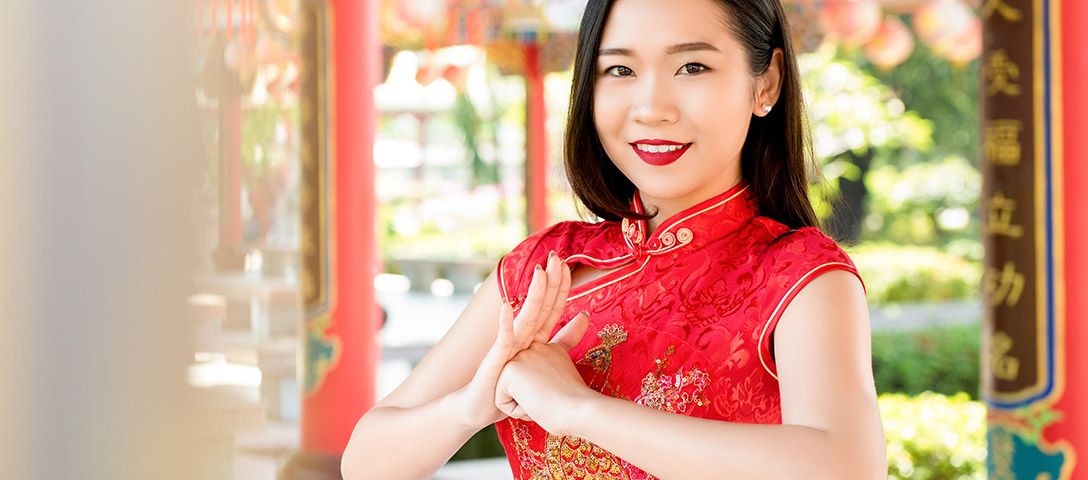Unveiling The Chinese Fringe Tree: A Gardener's Dream
For gardeners seeking a truly captivating and low-maintenance addition to their landscape, the Chinese Fringe Tree (Chionanthus retusus) stands out as an exceptional choice. This deciduous shrub or small tree, native to Eastern Asia, offers a stunning display of pure white flowers that can transform any yard into a breathtaking spectacle. Its ease of care, combined with multi-season interest, makes it a favorite among both seasoned horticulturists and novice planters.
Often described as "handsome," the Chinese Fringe Tree is celebrated not only for its prolific spring blooms but also for its appealing form, attractive fall foliage, and ornamental berries. Understanding the specific needs and unique characteristics of this remarkable plant is key to successfully integrating it into your garden design. Join us as we delve into the world of the Chinese Fringe Tree, offering expert advice on its cultivation, care, and the myriad benefits it brings to your outdoor space.
Table of Contents
- What is the Chinese Fringe Tree? (Chionanthus retusus)
- A Spectacle of Blooms: The Chinese Fringe Tree's Floral Display
- Growth Habits and Typical Size of the Chinese Fringe Tree
- Cultivating Your Chinese Fringe Tree: Expert Care Requirements
- Beyond the Blooms: Additional Benefits of the Chinese Fringe Tree
- Popular Cultivars of the Chinese Fringe Tree
- Common Pests and Diseases: A Worry-Free Tree?
- Landscaping with the Chinese Fringe Tree: Uses and Placement
- Conclusion
What is the Chinese Fringe Tree? (Chionanthus retusus)
The Chinese Fringe Tree, scientifically known as Chionanthus retusus, is a distinguished member of the Oleaceae, or olive family. This botanical family is quite diverse, also encompassing familiar plants such as oleander, ash, privet, and forsythia. The name Chionanthus itself is derived from Greek words: "chion" meaning “snow” and "anthos" meaning “flower,” a truly fitting description for a tree that becomes smothered in white blossoms. Native to Eastern Asia, specifically China, Taiwan, Korea, and Japan, this species has been admired and cultivated for centuries in its homeland before gaining popularity in Western gardens.
As a deciduous shrub or small tree, Chionanthus retusus sheds its leaves in the autumn, revealing an attractive branch structure that provides winter interest. Its natural form is often described as elegant, developing into a graceful specimen when given ample space to grow. Unlike some ornamental trees that demand constant attention, the Chinese Fringe Tree is remarkably easy to grow and requires little maintenance, making it an excellent choice for busy gardeners or those new to tree cultivation. Its adaptability to various conditions further enhances its appeal, allowing it to thrive in a range of garden settings.
A Spectacle of Blooms: The Chinese Fringe Tree's Floral Display
Without a doubt, the most striking feature of the Chinese Fringe Tree is its breathtaking floral display. In mid-spring, just as many other trees are leafing out, Chionanthus retusus bursts into an abundant profusion of pure white flowers. These delicate blossoms are held in dense clusters, typically 2 to 4 inches wide and long, at the ends of the branches. The individual flowers have shorter, somewhat wider petals compared to its North American cousin, the White Fringetree (Chionanthus virginicus), creating a distinct and equally captivating texture.
The sheer volume of these pristine white flowers is what truly sets the Chinese Fringe Tree apart. They literally smother the tree, creating an effect so profound that it often looks as if a fresh blanket of snow has fallen upon its branches, even in the warmth of spring. This visual phenomenon is, of course, the origin of its common name and the inspiration behind its botanical moniker. When in full bloom, this magnificent tree has an almost magical quality, capable of stopping any passerby in their tracks, compelling them to pause and admire its ethereal beauty. As the blooms eventually fade, the delicate petals gracefully drop to the ground, scattering like snow, adding another layer of seasonal charm to the landscape.
Growth Habits and Typical Size of the Chinese Fringe Tree
Understanding the growth habits and mature size of the Chinese Fringe Tree is crucial for proper placement in your landscape. This versatile plant can grow as either a multi-stemmed shrub or be trained into an elegant small tree, making it adaptable to various garden scales and designs. When allowed to grow naturally in an open setting, it typically develops a rounded form, maturing into a handsome specimen.
In terms of dimensions, the Chinese Fringe Tree generally reaches a height and spread of around 10 to 20 feet (3 to 6 meters). However, some sources indicate that when planted in optimal open conditions, this species can develop into an elegant small tree reaching twenty to thirty feet high with approximately the same spread, creating a substantial and impactful presence in the landscape. For instance, a round form of the Chinese Fringe Tree can grow to 25 feet (7.6m) tall and 10 feet (3m) wide, showcasing its potential for a more columnar, yet still broad, silhouette. Its moderate growth rate means it won't outgrow its space too quickly, allowing for thoughtful long-term garden planning. Its adaptable nature means it can fit into smaller urban gardens as a specimen tree or be incorporated into larger estate landscapes as part of a mixed border or woodland edge.
Cultivating Your Chinese Fringe Tree: Expert Care Requirements
One of the most appealing aspects of the Chinese Fringe Tree is its reputation for being extremely easy to grow and requiring little maintenance. This characteristic makes it an ideal choice for gardeners who desire a stunning ornamental tree without the burden of constant fuss. However, like any plant, providing the right initial conditions will ensure its health, vigor, and spectacular floral displays. Our expert advice on its care requirements, growth rate, and typical size will guide you to success.
Soil Preferences for Optimal Growth
The Chinese Fringe Tree is quite adaptable regarding soil, but it thrives best in well-drained, fertile soil. While it can tolerate a range of soil types, from sandy to clay, good drainage is paramount to prevent root rot. It prefers a slightly acidic to neutral pH, though it can also tolerate slightly alkaline conditions. If your soil is heavy clay, amending it with organic matter like compost or aged manure before planting will significantly improve drainage and aeration, creating an ideal environment for the roots to establish. Conversely, in very sandy soils, organic matter will help retain moisture and nutrients, providing a more consistent growing medium.
Light Needs for Abundant Blooms
For the most abundant floral display, the Chinese Fringe Tree prefers a location with full sun to partial shade. "Full sun" typically means at least six hours of direct sunlight per day. In such conditions, the tree will produce the most prolific clusters of white, snow-like flowers. While it can tolerate partial shade, meaning 4-6 hours of sun, especially in hotter climates, too much shade can reduce the number of blooms and lead to a more open, leggy growth habit. Aim for a spot where it receives morning sun and some afternoon shade if you live in an area with intense summer heat, as this can help prevent leaf scorch.
Watering Your Chinese Fringe Tree
Proper watering is essential, particularly during the establishment phase of your Chinese Fringe Tree. Newly planted trees require consistent moisture to encourage a strong root system. Water deeply and regularly, especially during dry spells, for the first year or two after planting. The goal is to keep the soil consistently moist but never waterlogged. Once established, the Chinese Fringe Tree becomes remarkably drought-tolerant, requiring less supplemental watering. However, during extended periods of drought, especially in summer, occasional deep watering will help maintain its vigor and overall health. Always check the soil moisture before watering; stick your finger about an inch or two into the soil – if it feels dry, it's time to water.
Hardiness and Climate Considerations
The Chinese Fringe Tree is a hardy plant, generally thriving in USDA Plant Hardiness Zones 5 through 9. This wide range indicates its adaptability to various climates, from colder temperate regions to warmer, more humid ones. In colder zones, ensuring it has some protection from harsh winter winds can be beneficial, though it is generally quite resilient. In warmer zones, providing some afternoon shade can prevent stress during the hottest parts of the summer. Its ability to withstand a range of temperatures and environmental conditions contributes to its reputation as an easy-care ornamental tree.
Beyond the Blooms: Additional Benefits of the Chinese Fringe Tree
While the spectacular spring blooms are undoubtedly the main attraction, the Chinese Fringe Tree offers a wealth of additional benefits that enhance its appeal to gardeners throughout the seasons. This makes it a truly four-season delight in the landscape, providing continuous interest even when its "snow" has melted.
- Outstanding Fall Color: As autumn arrives, the dark green leaves of the Chinese Fringe Tree transform into attractive shades of yellow, adding a vibrant splash of color to the fall landscape. This reliable display of autumnal hues provides a beautiful contrast to evergreen plants and complements other fall-blooming shrubs.
- Ornamental Berries: Following the spring flowers, if a female plant is present and pollinated, the tree produces small, dark blue, olive-like berries. These berries are not only ornamental, providing visual interest after the leaves have dropped, but they also serve a vital ecological role.
- Food for Birds: The attractive berries are a significant food source for various bird species, enhancing the tree's appeal to wildlife enthusiasts. Planting a Chinese Fringe Tree can help attract a diverse array of feathered friends to your garden, contributing to local biodiversity.
- Low Maintenance: As previously mentioned, the Chinese Fringe Tree is known for its easy care. Once established, it requires minimal pruning, is generally self-sufficient regarding water, and is not prone to serious pest or disease issues. This low-maintenance quality frees up gardeners' time to enjoy their outdoor spaces rather than constantly tending to their plants.
- Elegant Form: Even without its flowers, the elegant, rounded form of the Chinese Fringe Tree makes it a handsome specimen tree. Its branch structure provides winter interest, and its dense foliage offers a lush green backdrop during the summer months.
These multifaceted benefits solidify the Chinese Fringe Tree's position as a highly desirable and rewarding plant for any garden. It truly embodies the concept of a plant that gives back more than it asks.
Popular Cultivars of the Chinese Fringe Tree
While the straight species of Chionanthus retusus is magnificent on its own, several cultivars have been developed to highlight specific desirable traits, such as improved bloom production, more compact growth, or enhanced hardiness. One superb selection that has gained considerable popularity is 'China Snow'.
'China Snow' Chinese Fringe Tree: This particular cultivar is a favorite in many gardens and is renowned for being a four-season delight in the landscape. 'China Snow' is celebrated for its exceptionally abundant clusters of pure white flowers, even more so than the species, which truly smother the tree like snow in mid-spring. This enhanced floral display makes it an even more spectacular specimen. Beyond its prolific blooms, 'China Snow' also offers reliable fall color and maintains the easy-care nature of the species. Its slightly more upright and dense growth habit can make it an excellent choice for smaller spaces where a more controlled form is desired, while still reaching a significant height and spread to make a statement.
When choosing a Chinese Fringe Tree, exploring available cultivars can help you find the perfect fit for your specific garden needs and aesthetic preferences. Always check with reputable nurseries or plant suppliers for the best selection and advice on the varieties best suited for your local climate.
Common Pests and Diseases: A Worry-Free Tree?
One of the most reassuring aspects of growing the Chinese Fringe Tree is its remarkable resistance to common pests and diseases. Unlike many ornamental trees that require vigilant monitoring and frequent treatments, the fringe tree has no serious pests or diseases that typically plague it. This inherent resilience significantly contributes to its reputation as a low-maintenance and worry-free addition to the landscape.
While no plant is entirely immune to every potential issue, instances of significant pest infestations or debilitating diseases on Chionanthus retusus are rare. Occasionally, you might encounter minor issues like leaf spot in overly humid conditions or some temporary insect activity, but these are typically not severe enough to warrant intervention and the tree usually recovers without lasting damage. This robust health means you can enjoy the beauty of your Chinese Fringe Tree without the constant concern of battling horticultural ailments, allowing you to focus on its stunning blooms and year-round appeal.
Landscaping with the Chinese Fringe Tree: Uses and Placement
The versatility and striking beauty of the Chinese Fringe Tree make it an excellent choice for a variety of landscaping applications. Whether you have a sprawling estate or a compact urban garden, this tree can enhance your outdoor space with its multi-seasonal interest.
- Specimen Tree: When planted in the open, the Chinese Fringe Tree develops into an elegant small tree, making it a superb focal point in a lawn or garden bed. Its spectacular floral display ensures it will be a showstopper in mid-spring, drawing the eye and becoming a conversation piece.
- Accent Plant: Use it to accent a particular area of your garden, such as near a patio, deck, or entryway. Its manageable size and attractive form make it suitable for smaller spaces where a larger tree might overwhelm.
- Mixed Borders: Incorporate the Chinese Fringe Tree into mixed shrub and perennial borders. Its white flowers provide a striking contrast to colorful perennials and other shrubs, while its fall color adds another layer of interest.
- Understory Tree: In larger landscapes or woodland gardens, it can thrive as an understory tree, receiving partial shade from taller canopy trees. Its ability to tolerate some shade makes it adaptable to these settings.
- Street Tree or Parkway Tree: Its relatively compact size and tolerance for urban conditions make it a suitable choice for planting along streets or in parkways, provided there is adequate space for its mature spread.
- Wildlife Garden: As a source of food for birds, the Chinese Fringe Tree is a valuable addition to any wildlife-friendly garden, attracting feathered visitors throughout the fall and winter months.
When planning its placement, consider its mature height and spread to ensure it has enough room to grow without crowding. Remember, it will develop into a handsome, elegant tree with approximately the same spread as its height when given sufficient open space. This consideration will allow it to reach its full potential and display its natural beauty unimpeded.
Conclusion
The Chinese Fringe Tree, Chionanthus retusus, is truly a horticultural gem that deserves a place in more gardens. From its breathtaking "snow-like" floral display in spring to its vibrant fall color and ornamental berries, this tree offers continuous beauty and ecological benefits throughout the year. Its renowned ease of care, coupled with a remarkable resistance to pests and diseases, makes it an ideal choice for gardeners of all experience levels, promising a stunning landscape without demanding constant attention.
Whether you are looking to add a show-stopping specimen, attract local wildlife, or simply enjoy a beautiful, low-maintenance tree, the Chinese Fringe Tree is an investment that will reward you for years to come. We encourage you to explore the possibility of adding this magnificent tree to your yard. Have you grown a Chinese Fringe Tree before, or are you considering it for your next planting project? Share your experiences or questions in the comments below, and let's continue the conversation about this exceptional plant. For more expert advice on cultivating beautiful and resilient plants, be sure to explore other articles on our site!

Where to celebrate Chinese New Year | Luxury Travel | MO Magazine

Chinese Alphabet Differences: Simplified vs. Traditional Characters

Chinese Etiquette & Manners | China Customs & Culture Travel Guide